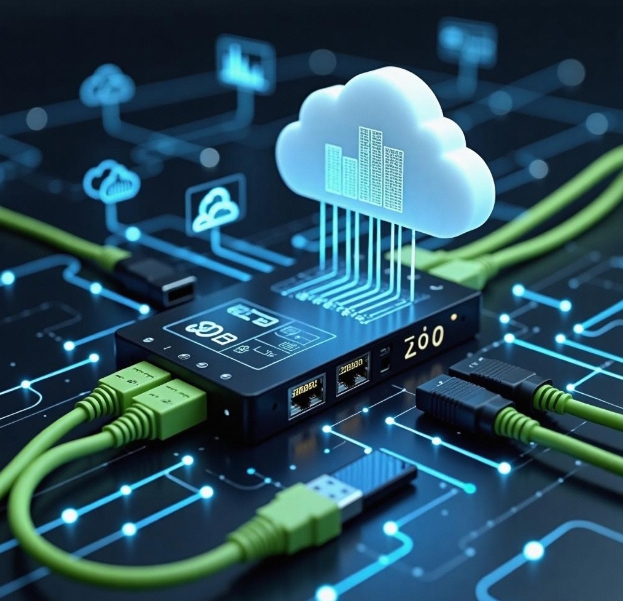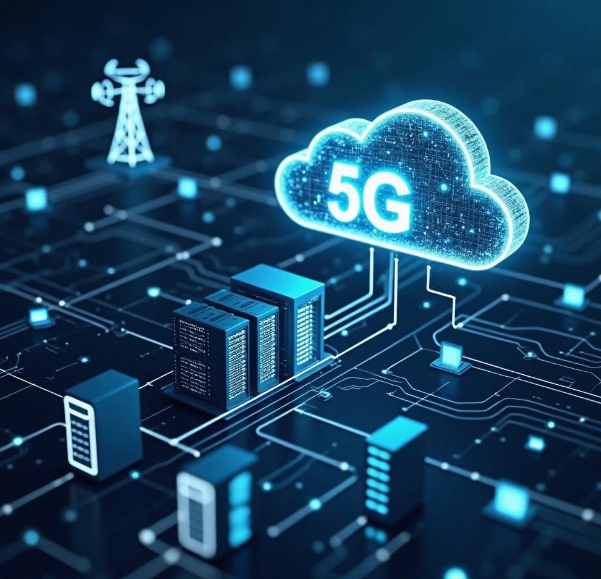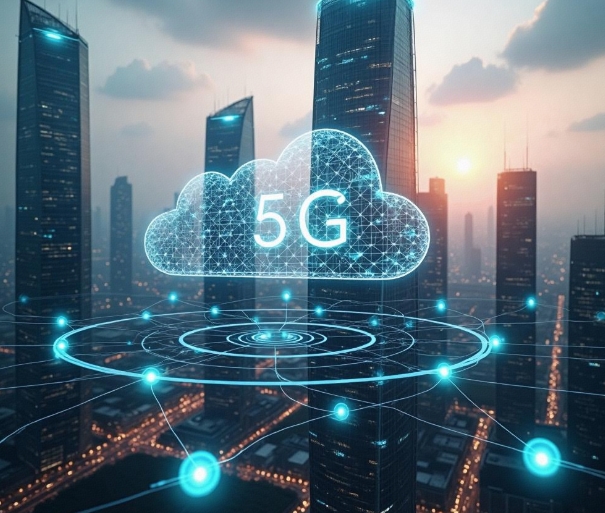Integration of Cloud Computing and 5G Technology: Accelerating Innovation in Smart Applications
- latest articles
- 1.DApp Development & Customization: Merging Diverse Market Needs with User Experience 2.Analysis of the Core Technical System in DApp Project Development 3.How to achieve cross-chain interoperability in Web3 projects? 4.How does the tokenization of points reconstruct the e-commerce ecosystem? 5.How to Set and Track Data Metrics for a Points Mall? 6.What is DApp Development? Core Concepts and Technical Analysis 7.Inventory of commonly used Web3 development tools and usage tips 8.Development of a Distribution System Integrated with Social E-commerce 9.Six Key Steps for Businesses to Build a Points Mall System 10.What is DApp Development? A Comprehensive Guide from Concept to Implementation
- Popular Articles
- 1.Future Trends and Technology Predictions for APP Development in 2025 2.Analysis of the DeFi Ecosystem: How Developers Can Participate in Decentralized Finance Innovation 3.From Zero to One: How PI Mall Revolutionizes the Traditional E-commerce Model 4.DAPP Development | Best Practices for Professional Customization and Rapid Launch 5.Recommended by the Web3 developer community: the most noteworthy forums and resources 6.From Cloud Computing to Computing Power Leasing: Building a Flexible and Scalable Computing Resource Platform 7.How to Develop a Successful Douyin Mini Program: Technical Architecture and Best Practices 8.Shared Bike System APP: The Convenient Choice in the Era of Smart Travel 9.How to Create a Successful Dating App: From Needs Analysis to User Experience Design 10.From Design to Development: The Complete Process of Bringing an APP Idea to Life
With the rapid advancement of technology, cloud computing and 5G technology have become the core drivers of today's digital transformation. The combination of these two not only represents the forefront of modern technological innovation but also provides robust support for the realization of various smart applications. Cloud computing, with its powerful data storage and computational capabilities, and 5G, through faster transmission speeds and lower latency, form an ideal technological ecosystem. On this foundation, whether it's smart cities, autonomous driving, the Internet of Things (IoT), or artificial intelligence (AI), all are experiencing unprecedented opportunities for innovation and development.
This article will delve into how cloud computing and 5G technology combine to accelerate the innovation of smart applications and explore the profound impacts this synergy may bring in the future.
Basic Concepts of Cloud Computing and 5G Technology
Definition and Development of Cloud Computing
Cloud computing is a technology that provides computing, storage, and networking services over the internet, allowing users to access computing resources on demand without investing in local hardware and software systems. As enterprise information needs grow, cloud computing has evolved into various service models, including Infrastructure as a Service (IaaS), Platform as a Service (PaaS), and Software as a Service (SaaS).
In recent years, cloud computing technology has matured, offering advantages such as high availability, elastic scalability, and global deployment, helping businesses reduce operational costs and enhance business flexibility. For example, companies can migrate applications and data storage to the cloud, saving significant infrastructure construction and maintenance expenses.
Characteristics and Prospects of 5G Technology
5G (the fifth generation of mobile communication technology) is the next-generation wireless communication standard following 4G, featuring three significant characteristics: higher data transmission speeds, lower latency, and broader connectivity. The theoretical maximum download speed of 5G can reach 20 Gbps per second, with upload speeds up to 10 Gbps and latency as low as 1 millisecond, enabling the transmission and processing of large volumes of real-time data.
5G is not just an upgrade to mobile internet; it will bring revolutionary changes to various industries, particularly in fields like autonomous driving, telemedicine, and smart cities, where it will play a massive driving role.
The Integration of Cloud Computing and 5G
Synergy Between High-Speed Data Transmission and Cloud Computing
The high bandwidth and low latency of 5G enable large-scale cloud computing services to perform real-time data processing more efficiently. For instance, data generated by various sensors deployed in smart cities can be quickly transmitted to the cloud via 5G networks, where the cloud platform instantly analyzes the data and returns results. This efficient data processing method can significantly enhance urban operational efficiency, optimize resource allocation, and provide real-time decision-making support.
At the enterprise level, the combination of cloud computing and 5G can also accelerate digital transformation. For example, manufacturing companies can use 5G networks to monitor production line data in real time, transmit production data to the cloud, and leverage cloud computing platforms for intelligent analysis, helping optimize production processes, reduce failure rates, and improve production efficiency.
The Rise of Edge Computing
The integration of cloud computing and 5G technology has also spurred the rise of edge computing. Edge computing involves processing and analyzing data closer to the data source rather than transmitting all data to a remote cloud. The low latency and high-speed connectivity provided by 5G technology enable edge computing to function more efficiently.
For example, in the field of autonomous driving, the vast amounts of data generated by vehicles need to be processed quickly to ensure driving safety and real-time performance. By transmitting data to nearby edge computing nodes via 5G networks, processing it in real time, and then feeding the results back to the vehicle, safety risks due to latency can be reduced, and system response speed can be improved.
The Integration of Cloud Gaming and 5G
With the proliferation of 5G technology, cloud gaming has also encountered unprecedented development opportunities. Traditional gaming requires powerful local hardware support, but with 5G's high-speed networks and cloud computing's robust computational power, players can transmit game data to the cloud in real time via 5G networks, utilize cloud servers for computation and rendering, and then stream the results back to the player's device via 5G, achieving high-quality gaming experiences without relying on local device performance.
This innovation in cloud gaming not only frees players from hardware limitations but also allows game developers to allocate more resources to innovating game content rather than developing versions compatible with various hardware platforms.
Innovations in Smart Applications Driven by the Integration of Cloud Computing and 5G
Smart Cities
The construction of smart cities relies heavily on the close integration of cloud computing and 5G technology. 5G networks provide high-speed communication capabilities, while cloud computing offers powerful data storage, processing, and analysis capabilities for cities. In smart cities, data generated by various smart devices and sensors is transmitted in real time to the cloud via 5G networks, where the cloud platform intelligently analyzes and responds to this data.
For example, intelligent transportation systems can analyze traffic data in real time to automatically adjust traffic lights and prevent congestion; urban environmental monitoring systems can detect air quality and water quality data in real time and, through cloud computing analysis, provide decision-making support for city managers, thereby optimizing the use of urban resources and improving residents' quality of life.
Autonomous Driving
Autonomous driving technology is another critical application area for the combination of 5G and cloud computing. Autonomous vehicles need to process data from onboard sensors in real time and respond quickly. The low latency of 5G networks enables vehicles to communicate with the cloud in real time for data transmission and computation. Cloud computing platforms can integrate data from different vehicles for higher-level analysis, thereby improving the accuracy and safety of driving decisions.
Additionally, the extensive coverage and stability of 5G technology allow vehicles to maintain connectivity with the cloud across different regions and environments, ensuring the efficient operation of autonomous driving systems.
Smart Healthcare
In the field of smart healthcare, the combination of 5G and cloud computing opens up new possibilities for remote diagnosis and health management. The high-speed connectivity of 5G enables high-definition video transmission, allowing doctors to diagnose and treat patients via remote video. Meanwhile, cloud computing platforms can store and process vast amounts of medical data, including electronic medical records and imaging data, enabling doctors to access and analyze patients' health data anytime, anywhere, and provide personalized treatment plans.
Furthermore, the low latency of 5G allows surgical robots to interact with doctors in real time, remotely controlling surgical equipment, greatly enhancing the accessibility and efficiency of medical services.
Future Outlook
The integration of cloud computing and 5G technology will undoubtedly bring unprecedented changes to various industries, but the full realization of this transformation faces some challenges. First, the construction of 5G networks requires significant investment, especially in coverage for remote areas. Second, data security and privacy protection remain critical issues that must be addressed during the integration of cloud computing and 5G technology. As technology continues to advance and relevant regulations and security measures improve, the integration of cloud computing and 5G will progress more steadily.
In the future, with the widespread adoption of 5G networks and the continuous optimization of cloud computing technology, we have reason to believe that smart applications will see more innovations, further driving the digital and intelligent development of society. 5G and cloud computing will become vital forces driving the next technological revolution, bringing a more efficient, convenient, and intelligent future to human society.
Conclusion
Cloud computing and 5G technology are not merely a simple combination of technologies but a powerful engine driving innovation and development across various industries. From smart cities to autonomous driving, from cloud gaming to smart healthcare, the integration of cloud computing and 5G has already become a crucial cornerstone of modern technological innovation. As these two technologies continue to mature and普及, we are ushering in a future that is smarter, more efficient, and more interconnected.
-

Applications and Challenges of Cloud Computing in the Internet of Things (IoT)
With the continuous advancement of information technology, cloud computing and t···
-

Integration of Cloud Computing and Artificial Intelligence: Enhancing Intelligent Applications
With the rapid advancement of technology, cloud computing and artificial intelli···
-

Data Security and Privacy Protection in Cloud Computing Applications
With the continuous advancement of information technology and the rapid developm···

 Blockchain
Blockchain












